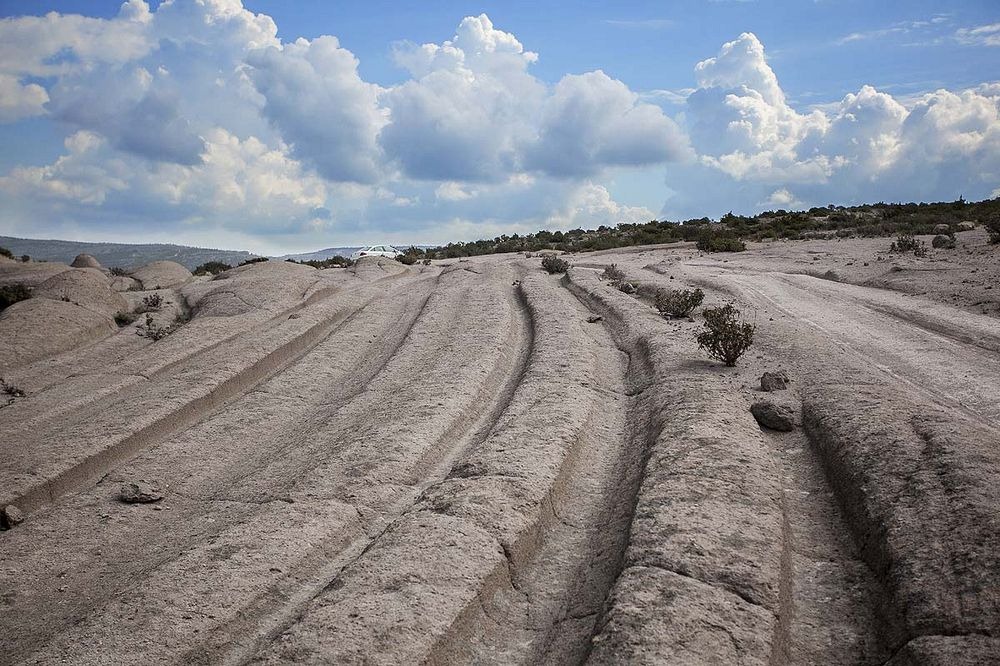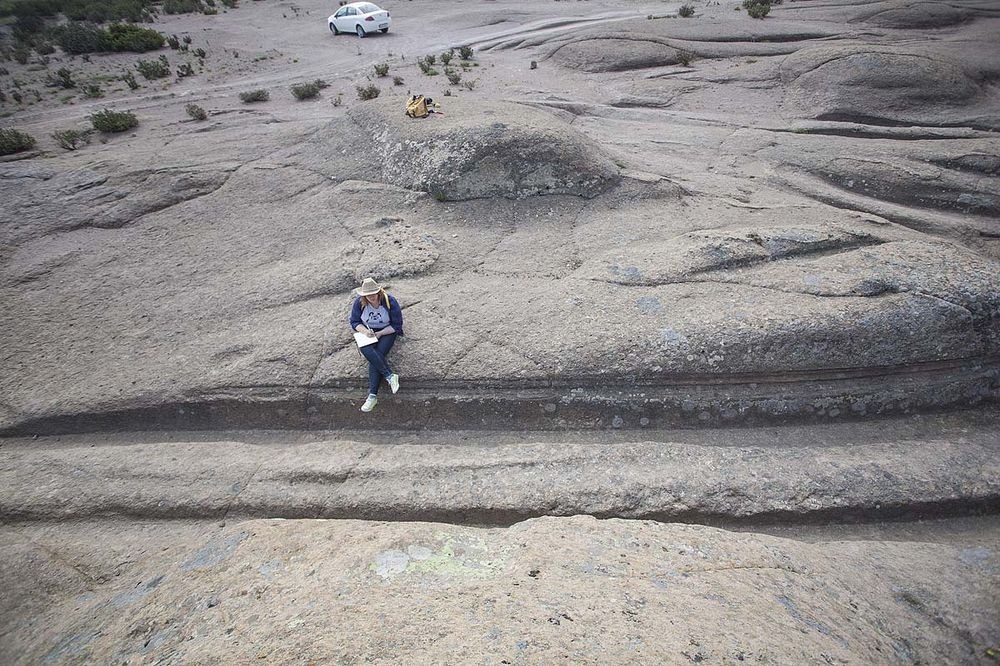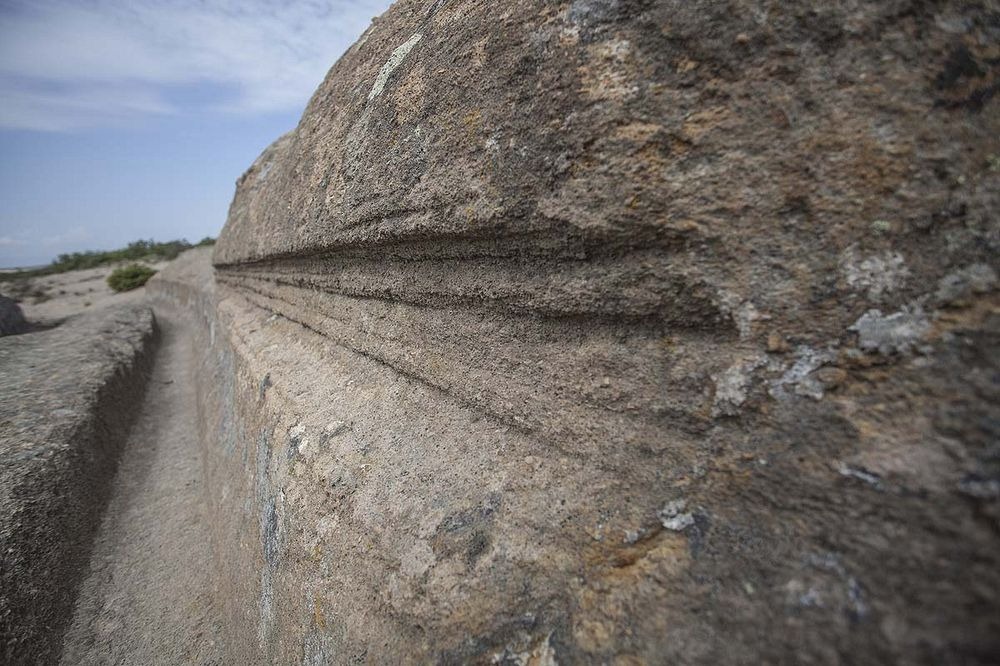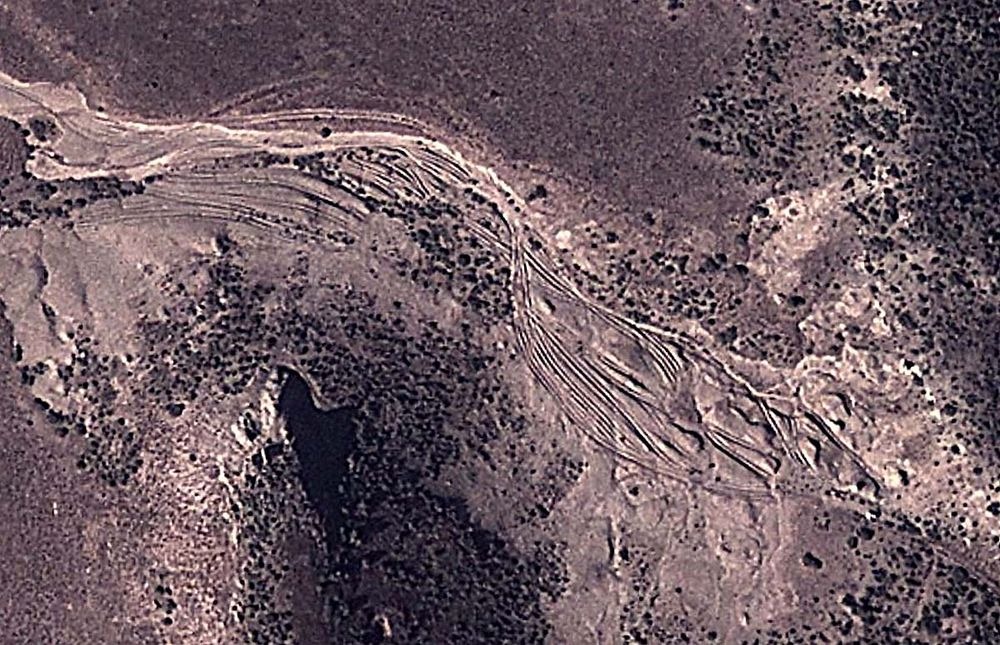In the Phrygian Valley of Turkey, in the west central part of Anatolia, are numerous so called “cart tracks” that crisscross across the landscape. These tracks are cut into the bedrock and are evenly spaced, as if made by the wheels of a cart or a vehicle, but much deeper than typical cart ruts. The deepest ruts are three feet deep. These tracks are somewhat similar to those found on the island of Malta.
The lack of precise dating has led some people to believe that these tracks are petrified ruts made millions of years ago by an ancient alien civilization driving heavy vehicles over the terrain that was still covered with volcanic ashes. Over the centuries, the tuffaceous deposits solidified into hard rock preserving the ruts, the same way dinosaur footprints are preserved in rocks.

Photo credit: Hidden Inca Tours
According to conventional academia, the earliest roads appeared in ancient Anatolia during Hittite Empire (1600 BC– 1178 BC). Later, paths were cut into the soft rock by the Phrygians and local tribes like the Lycians and Carians. They eventually became part of the Roman road network, which covered Turkey as far as the Euphrates and beyond.
The tracks that cover Phrygian Valley are, however, older than the Hittite Empire, but not by millions of years. A study conducted in 2004 suggests that these features were likely created for agricultural purposes, rather than as roads, possibly some 5,000 years ago.
The researchers believe that the furrows were drainage lines and the area in between were garden or crop beds. Because the region was arid, the furrows were dug into the bedrock in order to retain soil and water. The regular distance between the furrows probably reflected the manageable distance for people working on them – possibly related to the length of farm tools and the reach of the farmers.
"Long stretches of single or parallel lines appear to have more to do with water management and these often have a shallow gradient, which I think is to channel the water at a constant, but gentle flow to field areas," said Claudia Sagona, an expert in the archaeology of Turkey and Malta at the University of Melbourne, who conducted the study.
"In areas that were degraded and were reclaimed as fields, soil and organic matter was imported and built up. This kind of activity is documented in the Aran Islands and in historic accounts of soil manufacture in Malta,” she added.
"This common-sense explanation will probably not stop those who want to believe aliens invaded, but I think the really amazing aspect is how resourceful and savvy ancient farmers were. They knew their land, they understood how water could be managed and they developed strategies to improve food production."

Photo credit: Hidden Inca Tours

Photo credit: Hidden Inca Tours

Photo credit: Hidden Inca Tours

Photo credit: Hidden Inca Tours

Photo credit: Hidden Inca Tours
Sources: IBTimes / Ancient Origins / Culture Routes in Turkey



Comments
Post a Comment